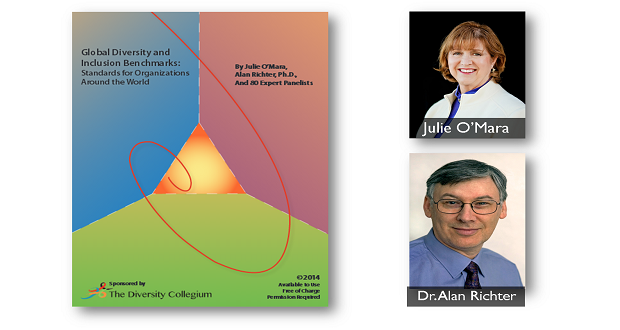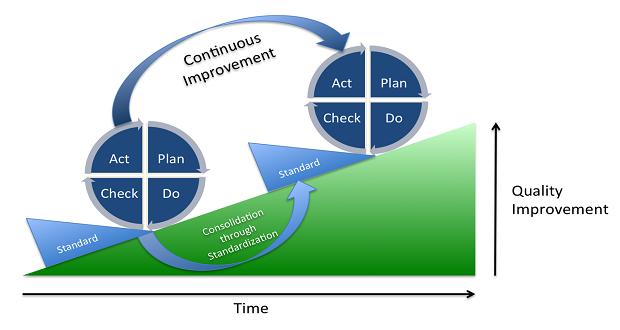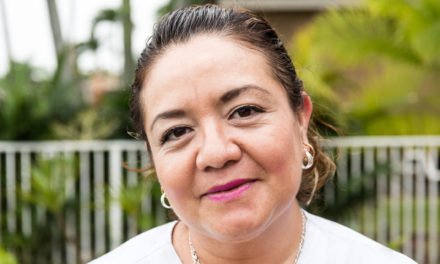“There is an old adage in organization work: It is hard to manage what you cannot measure. We believe that by providing global standards organizations can take notice of their “current state” of D&I, compare against their “desired” state, and be able to see the gap between current and desired state.” (GDIB introduction)
Last week we provided an overview of the 13 Global Diversity and Inclusion Benchmarks (GDIB). This week I will focus on what are called the foundational benchmarks which encompasses 3 categories:
- Diversity & Inclusion Vision, Strategy and Business case
- Leadership and Accountability
- Infrastructure and Implementation
These three areas are considered fundamental to the success of any diversity and inclusion approach. If you do not have a vision and strategy which incorporates a robust business case supported by strong leadership which is held accountable for results, you may as well not go any further. Those who think they can start a diversity and inclusion process before the foundational elements are in place will become frustrated and this is the reason why so many diversity and inclusion attempts fail.
The GDIB invite you to assess these three areas on the following behaviors from best practice (100%) to not yet started (0%).
[dropshadowbox align=”none” effect=”lifted-both” width=”600px” height=”” background_color=”#c0f0f3″ border_width=”1″ border_color=”#dddddd” ]
Category 1: D&I VISION, STRATEGY AND BUSINESS CASE
0%
___There is no articulated D&I vision, strategy, business case, goals, policies, principles, desired behaviors, competencies, or program.
___There is no linkage of D&I to the vision, mission, and goals of the organization.
25%
___If a D&I strategy exists; it is limited to human resource functions.
___Diversity is narrowly defined, referring to some underrepresented groups. The focus is primarily on numbers of people from various groups represented at different organizational levels.
___Equal opportunity, compliance, disability access, age discrimination, or other diversity-related policies have been communicated to prevent damaging legal action and publicity.
50%
___The organization has examined its practices, requirements, and culture and created strategies to reduce barriers to inclusion.
___D&I is defined broadly.
___A compelling D&I vision, strategy, and business case has been communicated to all employees. It enables the achievement of organizational goals and describes the multiple ways the organization benefits from D&I.
___D&I individual behaviors and expectations that help achieve the strategy are known by all employees.
___Annual D&I qualitative and quantitative goals that include input from a variety of internal and external stakeholders are being developed.
75%
___The organization’s vision and goals, as well as the requirement to embed equity, prevent harassment, reduce discrimination, and so forth are fully supported; violations of diversity-related policies are not tolerated.
___It is acknowledged by the majority of stakeholders that D&I is important for contributing to the success of the organization and it is “the right thing to do.”
___Organizational functions, locations, and market areas have a business case and annual goals based on their specific D&I-related needs and issues.
___D&I is included in organization-wide strategy meetings, including meetings on R&D, marketing, risk management, community involvement, and mergers and acquisitions
100%
___D&I has become embedded in the culture of the organization and is not seen as an isolated program, but rather as a key value and a means to growth and success.
___All the major components of D&I, including vision, strategy, business case, goals, policies, principles, desired behaviors, and competencies are regularly reviewed to leverage opportunities for organizational success.
___All employees and the board of directors demonstrate that D&I is aligned with and integral to organizational success.
___The organization credits accomplishment of its D&I strategy for contributing to its overall success.
___The organization is known as a leader in D&I and is frequently benchmarked for its D&I accomplishments.
___The organization’s strategy includes pioneering D&I components.
[/dropshadowbox]
[dropshadowbox align=”none” effect=”lifted-both” width=”600px” height=”” background_color=”#fee3e6″ border_width=”1″ border_color=”#dddddd” ]
Category 2: LEADERSHIP AND ACCOUNTABILITY
0%
___There is little or no leadership, involvement, or accountability regarding D&I.
___Leaders consistently see differences as potential for problems, rather than opportunities for enrichment.
25%
___Leaders accept some responsibility for D&I, especially as it relates to equal opportunity.
___Leaders require instructions and/or scripts to discuss D&I.
___Reactive measures are taken to deal with difficult D&I situations.
50%
___Leaders view managing D&I as one of their responsibilities.
___Senior leaders willingly make speeches and public statements, but these are usually limited to diversity-specific functions, projects, or events.
___Senior leaders sponsor diversity networks.
___Leaders understand that D&I is about treating people fairly rather than the same (equally) and strive to accommodate differences; tolerance is understood as both not giving and not taking offense on the part of self and others.
75%
___All employees are involved in D&I initiatives; rewards and/ or recognition are given to D&I champions and advocates.
___Everyone takes individual responsibility for achieving what the organization expects of them regarding D&I. All employees are held accountable for demonstrating behaviors and taking action to help achieve the organization’s D&I goals.
___Leaders support and are actively involved in diversity networks and advocate for the development of underrepresented talent.
___Leaders make internal and external speeches or statements relating to D&I to a variety of groups.
___The board of directors is diverse, is engaged in D&I issues, and holds the leadership team accountable for achieving the D&I vision aligned with business goals.
___Leaders receive coaching in D&I and provide coaching to others.
___Managing D&I is considered an essential leadership competency.
___Most leaders in the organization can articulate the D&I strategy, business case and goals, including how D&I enables the achievement of the organization’s vision, mission and goals.
100%
___Management performance, pay, bonuses, and promotions are tied to a variety of D&I indicators. Leaders are accountable for implementing the D&I strategy in all areas of the organization.
___Senior leaders are seen as change agents and role models and inspire others to take individual responsibility and become role models themselves. They routinely discuss the importance of D&I as a core organizational strategy, and provide consistent, visible leadership.
___Leaders and board members publicly support diversity-related initiatives, even if they are perceived to be controversial.
___Leaders and board members understand that the work of D&I is systemic and designed to strengthen the organization’s culture. They are fully committed to the organization’s D&I work.
___In surveys, a large majority of employees across a range of diversity dimensions rate their leaders as treating them fairly and inclusive.
[/dropshadowbox]
[dropshadowbox align=”none” effect=”lifted-both” width=”600px” height=”” background_color=”#d9f9d4″ border_width=”1″ border_color=”#dddddd” ]
Category 3: INFRASTRUCTURE AND IMPLEMENTATION
0%
___There is no organizational infrastructure or budget for D&I.
___No one in the organization has formal responsibility for addressing diversity issues.
25%
___D&I functions are performed as an additional, secondary duty of human resources and/or legal staff.
___Informal diversity networks and D&I committees may exist, but they have no real power or influence in the organization.
___There is little awareness in the organization about the role and functions of the D&I team or committee.
___Leaders from underrepresented backgrounds are assigned to lead D&I initiatives and programs in addition to their regular jobs.
50%
___There is a D&I manager and staff with responsibility for D&I.
___Diversity networks exist and have some support.
___An organization-wide D&I council/committee is given visible support by leaders, represents internal stakeholders, and has some influence on D&I efforts.
___An adequate budget has been allocated to cover implementation.
___There is awareness in the organization about the role and function of the D&I team.
75%
___There are adequate resources and a structure designed to assure full implementation of the organization’s D&I strategy and plans. Even if D&I staff is decentralized they are in alignment with implementing the organization’s strategy.
___The D&I function is headed by a senior leader who regularly interacts with the board of directors, and is supported by a knowledgeable staff of professionals, adequate for the size and goals of the organization.
___Diversity networks have access to the organization’s senior leaders and decision-makers.
___D&I councils/committees in departments or divisions exist, and are in alignment with the organization’s strategy.
___D&I professionals are viewed as change agents and, as such, collaborate with other organizational functions.
___If the organization has labor unions, they are fully engaged in the D&I effort.
100%
___The senior D&I professional is a member of the senior management team, is treated as an equal partner, and serves as a diversity coach to its leaders.
___Employee teams or change agents exist throughout the organization to advise on and drive D&I change efforts. They are rewarded and compensated for their work.
___D&I councils/committees work collaboratively with D&I professionals, the senior management team, and labor unions, if present in the organization.
___Diversity networks are treated as business partners and are engaged to support organizational goals. ___They may advise on marketing, recruitment, risk management, and so forth.
___The organization lives its D&I values; it supports the raising of D&I issues, concerns and opportunities, and encourages ideas from all employees.
[/dropshadowbox]
How does your organization stack up related to the foundational benchmarks? Next week we will explore more deeply the internal benchmarks.



















